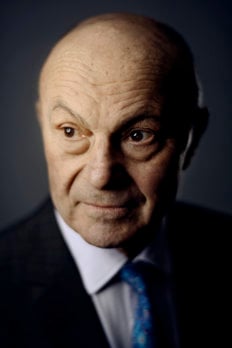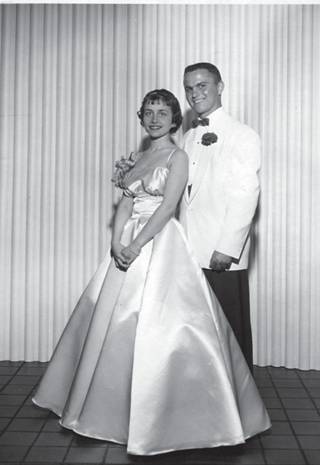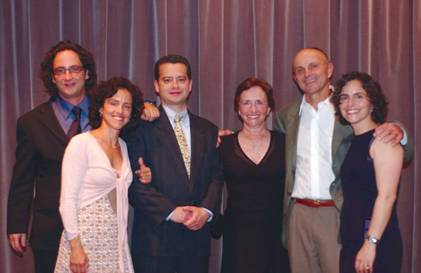Eugene F. Fama
Biographical

My grandparents on both sides immigrated to the United States from Sicily in the early 1900s, so I am a third generation Italian-American. The sec ond generation, my parents and aunts and uncles, were intelligent people, but they reached maturity at the start of the Great Depression, when there were few opportunities, so all worked manual jobs, when they could find them. I was the first in the lineage to go to university.
My father was a truck driver, but during the Second World War, he worked in the holds of battle ships at the Boston shipyard. The ships were lined with asbestos, so although my father never drank or smoked, he eventually died at age 70 of asbestosis, a form of lung cancer. My mother died earlier, at age 60, of cervical cancer, caused by high doses of hormones that were commonly prescribed in those days for women going through “the change of life.”
I was born in Somerville, Massachusetts, a suburb of Boston, but soon thereafter my parents along with one of my father’s sisters and her husband together purchased a two-flat building across the Mystic River in Medford. I doubt they had money for a down payment, but the whole neighborhood was in foreclosure, so my guess is that they just had to make the monthly payments to keep the house. I went to a Catholic grammar school (St. James) in Medford (grades 1 through 8). All the children in that school were from working class families like mine. There were 60 children in each class, but all learned to read, write, and do arithmetic, and many eventually went to college, all of which confirms recent research evidence that there is little relation between academic performance and class size or expenditures per student.
I went on to Boys Catholic High School, also known as Malden Catholic, in the city of Malden, which is next to Medford. The school had fewer than 500 students spread across four years. The teachers were Xaverian Brothers. High school sports are a big deal in the Boston area (as they are in Chicago). For some reason, which I’ve never understood, relatively small Catholic high schools are prominent in sports. I played basketball (poorly), ran track (second in the state meet in the high jump – not bad for a 5’8″ kid), played football (class B state champions in my junior year), and baseball (state semi-finals two years). I claim to be the inventor of the split end position in football, an innovation prompted by the beatings I took trying to block much bigger defensive tackles. I am in my high school’s athletic hall of fame.
I entered Tufts University in 1956, intending to become a high school teacher and sports coach. At the end of my second year, I married my high school sweetheart, Sallyann Dimeco, now my wife of more than 55 years. Sally was a student at Girls Catholic in Malden, just across the street from Boys Catholic. Our high school prom picture is below. We have four adult children (see picture below) and ten delightful grandchildren, all but two also adults. In an interview at the Nobel banquet, my daughter Elizabeth commented that the research success of an Economics Laureate is almost always enabled by a spouse who provides a nurturing family environment. In our family this is clearly Sally, whose family contributions dwarf mine.


At Tufts I started in Romance languages but after two years became bored with rehashing Voltaire and took an economics course. I was enthralled by the subject matter and by the prospect of escaping lifetime starvation on the wages of a high school teacher. In my last two years at Tufts, I went heavy on economics. The professors, as teachers, were as inspiring as the research stars I later profited from at the University of Chicago.
My professors at Tufts encouraged me to go to graduate school. I leaned toward a business school Ph.D. My Tufts professors (mostly Harvard economics Ph.Ds) pushed Chicago as the business school with a bent toward serious economics. I was accepted at other schools, but April 1960 came along and I didn’t hear from Chicago. I called and the dean of students, Jeff Metcalf, answered. (The school was much smaller then.) They had no record of my application. But Jeff and I hit it off, and he asked about my grades. He said Chicago had a scholarship reserved for a qualified Tufts graduate. He asked if I wanted it. I accepted and, except for two great years teaching in Belgium, I have been at the University of Chicago since 1960. I wonder what path my professional life would have taken if Jeff didn’t answer the phone that day. Serendipity!
During my last year at Tufts, I worked for Harry Ernst, an economics professor who also ran a stock market forecasting service. Part of my job was to invent schemes to forecast the market. The schemes always worked on the data used to design them. But Harry was a good statistician, and he insisted on out-of-sample tests. My schemes invariably failed those tests. I didn’t fully appreciate the lesson in this at the time, but it came to me later, in the evolution of work on market efficiency.
During my second year at Chicago, with an end to course work and prelims in sight, I started to attend the Econometrics Workshop, at that time the hotbed for research in finance. Merton Miller had recently joined the Chicago faculty and was a regular participant, along with Harry Roberts and Lester Telser. Benoit Mandelbrot was an occasional visitor. Benoit presented in the workshop several times, and in leisurely strolls around campus, I learned lots from him about fat-tailed stable distributions and their apparent relevance in a wide range of economic and physical phenomena. Merton Miller became my mentor in finance and economics (and remained so throughout his lifetime). Harry Roberts, a statistician, instilled a philosophy for empirical work that has been my north star throughout my career.
Miller, Roberts, Telser, and Mandelbrot were intensely involved in the burgeoning work on the behavior of stock prices (facilitated by the arrival of the first reasonably powerful computers). The other focal point was MIT, with Sydney Alexander, Paul Cootner, Franco Modigliani, and Paul Samuelson. Because his co-author, Merton Miller, was now at Chicago, Franco was a frequent visitor. Like Merton, Franco was unselfish and tireless in helping people think through research ideas. Franco and Mert provided an open conduit for cross-fertilization of market research at the two universities. Both eventually became Laureates in Economic Sciences.
At the end of my second year at Chicago, it came time to write a thesis, and I went to Miller with five topics. Mert always had uncanny insight about research ideas likely to succeed. He gently stomped on four of my topics, but was excited by the fifth. From my work for Harry Ernst at Tufts, I had daily data on the 30 Dow Jones Industrial Stocks. I proposed to produce detailed evidence on (1) Mandelbrot’s hypothesis that stock returns conform to non-normal (fat-tailed) stable distributions and (2) the time-series properties of returns. There was existing work on both topics, but I promised a unifying perspective and a leap in the range of data brought to bear.
Vindicating Mandelbrot, my thesis shows (in nauseating detail) that distributions of stock returns are fat-tailed: there are far more outliers than would be expected from normal distributions – a fact reconfirmed in subsequent market episodes, including the most recent. Given the accusations of ignorance on this score recently thrown our way in the popular media, it is worth emphasizing that academics in finance have been aware of the fat tails phenomenon in asset returns for 50+ years.
My thesis and the earlier work of others on the time-series properties of returns falls under what came to be called tests of market efficiency. I coined the terms “market efficiency” and “efficient markets,” but they do not appear in my thesis. They first appear in “Random Walks in Stock Market Prices,” paper number 16 in the series of Selected Papers of the Graduate School of Business, University of Chicago, reprinted in the Financial Analysts Journal (Fama 1965b).
The discussion above is a short history of my personal life and my early professional life. A full description of the work cited in the Economic Sciences Prize award is in the printed version of my Prize Lecture, “Two Pillars of Asset Pricing,” which will soon appear in the American Economic Review Vol. 104, Number 6, pp. 1–20 and is also found in a slightly edited version in this volume. A more complete review of all my research in finance is in “My Life in Finance,”
Annual Review of Financial Economics, 3 (December 2011), 1–15.
Vita
February 2014
Born: February 14, 1939 – Boston, Massachusetts
Marital Status: 55 years married – four children, ten grandchildren
Education
Undergraduate: Tufts University, Medford, Massachusetts; B.A., 1960.
Graduate: Graduate School of Business (now the Booth School), University of Chicago; 1960–63. MBA, 1963; Ph.D., 1964, Dissertation: The Behavior of Stock Market Prices.
Main Honors and Activities
The Sveriges Riksbank Prize in Economic Sciences in Memory of Alfred Nobel, 2013
Fellow, American Academy of Arts and Sciences, 1989.
Fellow of the American Finance Association, January 2001. First elected fellow.
Deutsche Bank Prize in Financial Economics, 2005, first recipient.
Morgan Stanley American Finance Association Award for Excellence in Finance, 2007, first recipient.
Onassis Prize in Finance, April 2009, first recipient.
Chaire Francqui (Belgian National Science Prize), 1982.
Doctor of Law, University of Rochester, 1987.
Doctor of Law, DePaul University, 1989.
Doctor Honoris Causa, Catholic University of Leuven, Belgium, 1995.
Doctor of Science Honoris Causa, Tufts University, 2002.
Fellow, Econometric Society.
March 2001. Membre correspondant, Acadèmie des sciences morales et politiques, section Économie, politique, statistique et finance, de l’Institut de France.
Smith-Breeden Prize (with co-author Kenneth R. French) for the best paper in the Journal of Finance in 1992, “The Cross-Section of Expected Stock Returns.”
Fama-DFA Prize for the best paper published in 1998 in the Journal of Financial Economics in the areas of capital markets and asset pricing, “Market Efficiency Long-Term Returns and Behavioral Finance.”
Jensen Prize (second place) for the best paper in corporate finance and organizations published in the Journal of Financial Economics in 2001. “Disappearing Dividends: Changing Firm Characteristics or Lower Propensity to Pay,” (with Kenneth R. French)
Nicholas Molodovsky Award from the CFA Institute, 2006, presented for “outstanding contributions to the investment profession of such significance as to change the direction of the profession and raise it to higher standards of accomplishment.”
CME Fred Arditti Innovation Award, April 24, 2007.
Jensen Prize (second place) for the best paper in corporate finance and organizations published in the Journal of Financial Economics in 2006. “Profitability, Investment, and Average Returns,” (with Kenneth R. French).
Graham and Dodd Best Perspectives Award from the Financial Analysts Journal, 2012
At Tufts: Dean’s List (1956–60); Society of Scholars (1957–60) – a group consisting of the top two students in each of the sophomore, junior and senior classes; Phi Beta Kappa; Omicron Chi Epsilon; Class of 1888 Prize Scholarship (1959) – given each year to the school’s outstanding student-athlete; graduated Magna Cum Laude with honors in Romance Languages.
Malden Catholic High School Athletic Hall of Fame, 1992.
Work Experience
1963–1965 Assistant Professor of Finance, University of Chicago, Graduate School of Business.
1966–1968 Associate Professor of Finance, University of Chicago, Graduate School of Business.
1968–1973 Professor of Finance, University of Chicago, Graduate School of Business.
1973–1984 Theodore O. Yntema Professor of Finance, University of Chicago, Graduate School of Business.
1975–1976 Visiting Professor, Catholic University of Leuven and European Institute for Advanced Studies in Management, Belgium.
1982–1995 Visiting Professor (Winter quarters), Anderson Graduate School of Management, University of California, Los Angeles.
1982– Board of Directors, Dimensional Fund Advisors. Member of the Investment Strategy Committee.
1984–93 Theodore O. Yntema Distinguished Service Professor of Finance Graduate School of Business, University of Chicago.
1993– Robert R. McCormick Distinguished Service Professor of Finance, Graduate School of Business, University of Chicago.
Professional Activities
American Economic Association, American Finance Association. Associate Editor, Journal of Finance (1971–73, 1977–80). Advisory Editor, Journal of Financial Economics (1974– ). Associate Editor, American Economic Review (1975–77). Associate Editor, Journal of Monetary Economics (1984–96)
This autobiography/biography was written at the time of the award and later published in the book series Les Prix Nobel/ Nobel Lectures/The Nobel Prizes. The information is sometimes updated with an addendum submitted by the Laureate.
